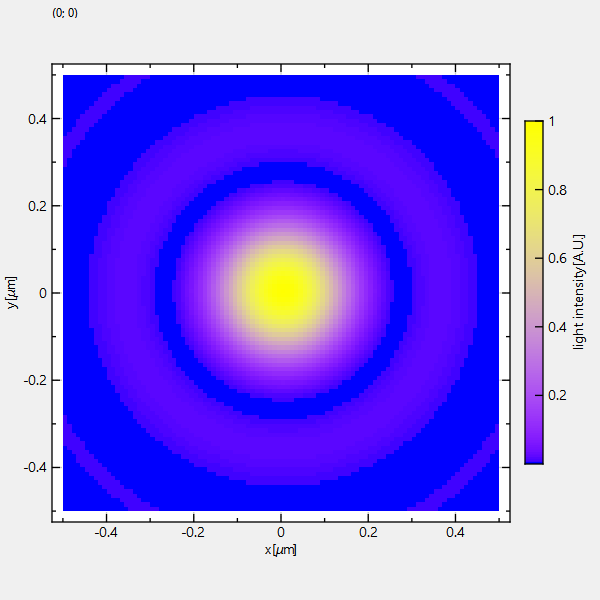 |
JKQTPlotter trunk/v5.0.0
an extensive Qt5+Qt6 Plotter framework (including a feature-richt plotter widget, a speed-optimized, but limited variant and a LaTeX equation renderer!), written fully in C/C++ and without external dependencies
|
 |
JKQTPlotter trunk/v5.0.0
an extensive Qt5+Qt6 Plotter framework (including a feature-richt plotter widget, a speed-optimized, but limited variant and a LaTeX equation renderer!), written fully in C/C++ and without external dependencies
|
This project (see ./examples/imageplot_nodatastore/) simply creates a JKQTPlotter widget (as a new window) and adds a color-coded image plot of a mathematical function (here the Airy disk). The image is stored as a simple C-array in row-major ordering and then given to a JKQTPMathImage to visualize it. The data is stored as a pointer directly in the JKQTPMathImage object. There is also a variant JKQTPColumnMathImage of JKQTPMathImage, which references a column in the internal JKQTdatastore and uses the data there for plotting. In both cases data has to be organized as a row-major matrix of values. JKQTPMathImage supports different dataytpes ([u]nit8/16/32/64,float,double see JKQTPMathImageBase::DataType) that can be configured e.g. by setData().
The source code of the main application is (see imageplot_nodatastore.cpp:
The result looks like this:

See examples/imageplot for a detailed description of the other possibilities that the class JKQTPColumnMathImage (and also JKQTPMathImage) offer with respect to determining how an image is plottet.